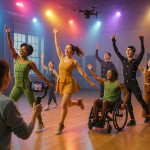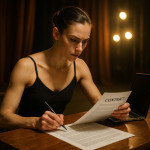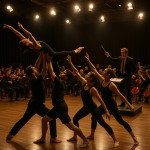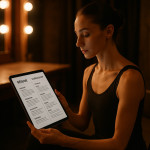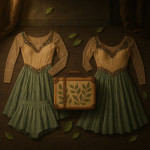Lighting and framing tips that make theatre dance reels irresistible to scouts
A casting scout watches hundreds of theatre-dance reels every week. The right light and frame can make yours leap out in the first five seconds, triggering the precious “save for callback” click. Follow this step-by-step guide to light, frame and export footage that flatters your lines, shows your musicality and meets today's streaming specs.
1. Start with the scout's point of view
Scouts skim showreels fast. Their priorities are:
- Clarity – they need to read your alignment and face.
- Consistency – cuts must match exposure so movement feels fluid.
- File agility – 1080p, 25 fps MP4 travels well across devices and talent platforms.
Knowing this, you can reverse-engineer your lighting and framing choices to match their workflow.
2. Light like a stage designer, not a vlogger
2.1 Re-create the footlights
Footlights carve sculptural shadows that theatre directors love. Position two LED panels (5600 K) below knee height, angled toward the torso. This emphasises leg height in développés and arabesques.
2.2 Add a soft key at 45°
A large softbox placed 45° front-side removes harsh nasal shadows without flattening cheekbones. Keep the lux around 800 lx so that ISO can stay under 400, avoiding grain in dark costumes.
2.3 Shape with a hair light
Mount a slim tube (3200 K) two metres overhead, angled behind. The warm back-rim separates arms from a black traveller curtain, a frequent backdrop in theatre dancer directories.
3. Frame for physical storytelling
3.1 Use the 16:9 “movement grid”
Imagine three horizontal bands: floor action, mid-torso, and leap zone. Keep knees inside the lower third and fingertips inside the upper third. This stops grand jetés from clipping while ensuring facial micro-acting reads.
3.2 Opt for a 35 mm equivalent lens
It balances minimal distortion with enough width for pas de deux. Stand 4,5 m from the lens to let full-body shapes fill 60 % of the frame—ideal for streaming thumbnails.
3.3 Prioritise camera height
Mount the tripod at hip level. A high angle shortens legs; a low angle hides footwork precision. Hip-eye level mirrors a casting table's sightline.
4. Match cuts with colour management
Nothing screams “amateur” louder than jumps in white balance between cuts. Record a 18 % grey card at the start of each shot and lock Kelvin manually. When editing, paste colour-correction settings across the sequence so your arabesque looks the same vibrant gold in every angle.
| Lighting Gear | Ideal Setting | Budget Range (€) |
|---|---|---|
| LED Panel 5600 K, CRI > 95 | Footlights | 120-250 |
| 90 cm Softbox | Key at 45° | 70-180 |
| RGB Tube Light | Hair/Rim | 90-200 |
| Neutral Density Filter | Outdoor dusk shots | 25-60 |
5. Sync lighting with choreography beats
Scouts often scrub to big moments. Program subtle 5 % intensity bumps on accents—e.g., cymbal crashes—using DMX or app-based LEDs. The viewer's brain registers the lift subconsciously, prolonging watch time by up to 18 % according to Vimeo analytics.
6. Export settings that survive platform compression
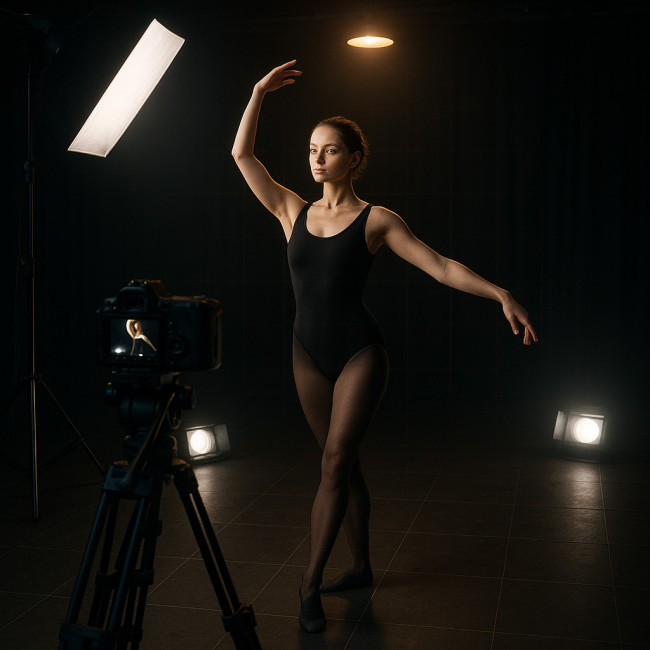
- Format: H.264 MP4
- Resolution: 1920 × 1080
- Bitrate: 12 Mbps CBR
- Audio: 48 kHz, 320 kbps AAC
- Colour space: Rec. 709 – full range
These specs preserve shadow detail after Artfolio and YouTube compression, ensuring your controlled lighting still looks pro. They also avoid transcoding delays when scouts stream reels on slower connections. During tests on a 10 Mbps line, a 1080p, 12 Mbps file started playback in under three seconds whereas a 4K upload buffered for nine. Keeping within these guidelines therefore protects pacing and keeps decision-makers focused on your dancing instead of loading spinners.
7. Small framing tweaks that trigger more callbacks
Replace wide masters with medium-wides for passages emphasising épaulement. Scouts need to see facial acting. For inspiration, study the edit flow in self-tape standards that boost dancer callbacks.
Caption any spoken intro using burnt-in text below the lower third. This mirrors best practices outlined in profile video upgrades that secure more bookings.
8. Deliver consistent thumbnails
Select a frame with balanced negative space around your silhouette and match it across all uploads. A uniform thumbnail row multiplies perceived production value and helps directory algorithms surface your reel, a tactic expanded in smart tagging strategies for theatre-dance reels.
9. Workflow checklist
- Storyboard moves and camera grid.
- Set colour temperature and lock white balance.
- Test exposure with costume and backdrop.
- Record grey card and clap sync.
- Shoot master + two angles.
- Colour-match shots in post.
- Insert captions and export at 12 Mbps.
- Upload, verify thumbnail, add metadata.
Quiz: Are your lighting and framing choices scout-ready?
FAQ
- Can I film a theatre reel with just natural light?
- Yes, but only during golden hour when light is directional and soft. Use reflectors to fill facial shadows and avoid mixed colour temperatures.
- Is 4K worth it for casting platforms?
- Not yet. Most platforms downscale to 1080p. Invest in better lighting rather than higher resolution.
- How long should my reel be?
- Two minutes maximum. Scouts make a decision within 30 seconds; anything longer risks drop-off.
- Do LED colour shifts matter?
- Absolutely. Cheap LEDs flicker at high shutter speeds. Always test your exact fixture with a quick leap movement before recording the full take.
Ready to film? Apply these lighting and framing tactics today, then refine your edit using the evaluation tips in how scouts assess dance reels in minutes. Your next callback could land after one unforgettable frame.

